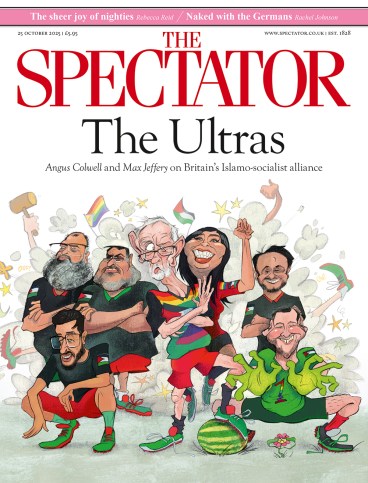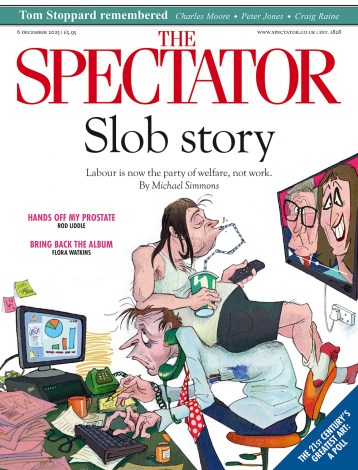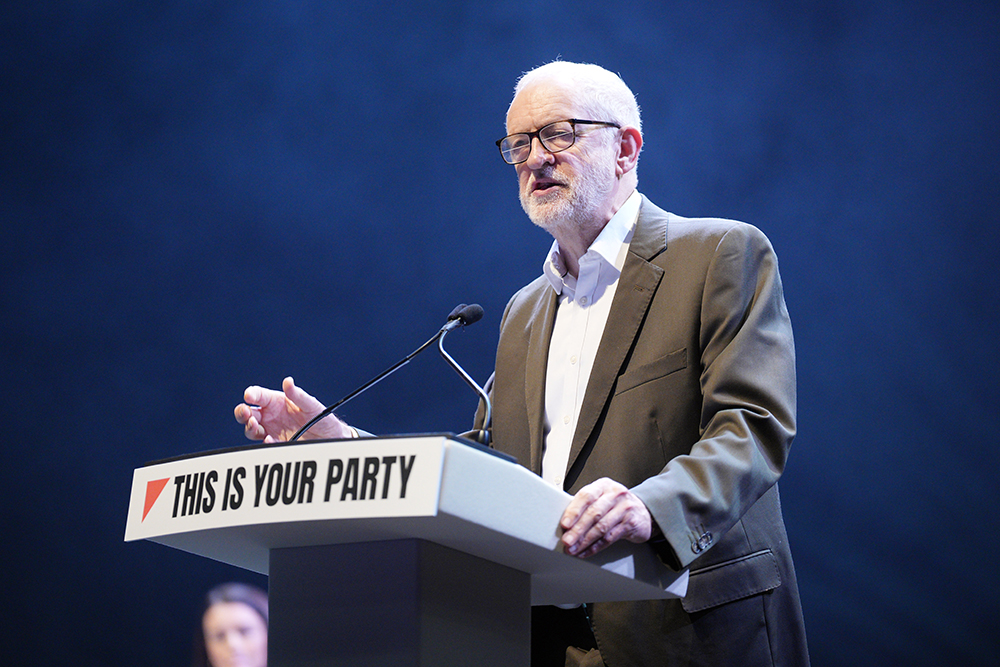
Taking place every October in Regent’s Park, the Frieze fair is probably the biggest event in London’s art calendar. It is also, as a spectacle, by far the least enjoyable. With works crammed into cubicle-sized booths, and punters battling a crossfire of air kisses and the palpable stress ricocheting around the flimsy partitions, I struggle to think of a worse context in which to look at art of any stripe. Still, it always used to be an occasion to take the pulse of the contemporary art world, to pick out the visual signatures of the reigning avant-garde tendency and clock what Jeremy Deller was doing with his facial hair at any given moment. This year’s iteration proposed no such insights. Instead, it offered acres of samey, vaguely woo-woo figurative painting; and I didn’t even see Deller once. It felt, alas, like any other trade fair: joyless and perfunctory.
Those witchy figurative painters I mention owe a debt to Peter Doig, a staggeringly successful artist whose work embodies many of the same qualities: recognisable imagery, much of it borrowed from a pan-global parade of spiritual symbolisms; faintly spooky atmospheres, sometimes wistful, sometimes ominous; loud colours; and a decidedly syncretic approach to composition. The difference is that Doig, one of the great cultural appropriators of our time, is the real deal. It’s always a pleasure to see his work, and a new show at the Serpentine offers precisely that opportunity. It’s lovely, if not entirely mind-bending: Doig fields lions of Judah reclining against a prison wall in Port of Spain, faux-naif portraits of calypso musicians that look like they’ve been torn from the walls of a West Indian canteen, high-spec sound systems piled up on top of each other in the jungle.
There’s also that culturally catholic approach, with the harbour of Collioure – a go-to post-impressionist reference – hovering on the horizon against a Caribbean sunset, or a Trinidadian steel band practice, painted from memory, melded with the artist’s recollections of a tea house in Tamil Nadu. It’s never entirely clear what the point is, but it’s seductive all the same. Altogether more baffling is Doig’s decision to fill the space with music blasted from massive old cinema speakers: perhaps it comes down to the particular record that happens to be playing at the moment of visiting – in my case, a pleasant but inert bit of Eno-like ambient filler – but I left miffed.
Otherwise, the galleries weren’t up to much: Gagosian gave us a gargantuan show by standout dull artist Christopher Wool, while Hauser & Wirth led with the memorably named but equally boring Swiss painter Nicolas Party. White Cube, however, fielded a stormer of an exhibition at Mason’s Yard devoted to the totemic photographer Andreas Gursky, who hasn’t significantly changed course since the 1990s but still captivates absolutely. His mostly vast images, composed from thousands of individual shots, are pure focus: you could send yourself loopy trying to match them to reality. Here, he gives us – inter alia – pictures of Harry Styles performing in front of vast audiences in Bologna and Frankfurt, each attendee rendered crisp and clear; and a fabulous tableau of the ThyssenKrupp plant, as uncanny a composition as any produced by Jules Adler or indeed Bruegel.
I struggle to think of a worse context in which to look at art of any stripe
An altogether more revelatory experience is to be had at Stenersen, Kode, across the water in Bergen, Norway. The attraction there was an exhibition of Georg Baselitz’s prints from the 1960s to the present day. Baselitz was born in Germany in 1938 and got stuck in the East when the war ended. He was forced out of the country for ‘sociopolitical immaturity’ in 1957, and in 1969 claimed to have reinvented painting by turning his canvases upside-down – thus supposedly removing ‘narrative’ and forcing onlookers to see them as objects. He’s always handy with an inflammatory quote, wilfully winding up anyone who’ll listen. And while he’s primarily a painter – I’ve never got along with his big canvases – the prints are fabulous.
It’s a blast: his early etchings, created after he’d been to Florence to study Old Master techniques, are pictures that nod as much to the precision of Dürer as they do to the controlled mania of James Ensor. From the 1970s onward, however, his style becomes looser, more impressionistic: he carves out cowboys, dogs, copulating couples and expressionistic portraits rough-hewn from woodcuts. There are borderline cartoonish trees and weird, recurring archetypes – the hero, the eagle, his own wife’s head. There are nearly 300 of them here and they look great. Every picture conjures meaning from a riotous constellation of deliberate slashes, curls and indents; you pick them apart, just as he does the surfaces he works on. It’s image-making at its most deliberative and, frankly, most awe-inspiring. ‘There isn’t a better artist than myself,’ he recently told an incredulous Times interviewer. A stretch, perhaps – but he’s probably not far off.








Comments